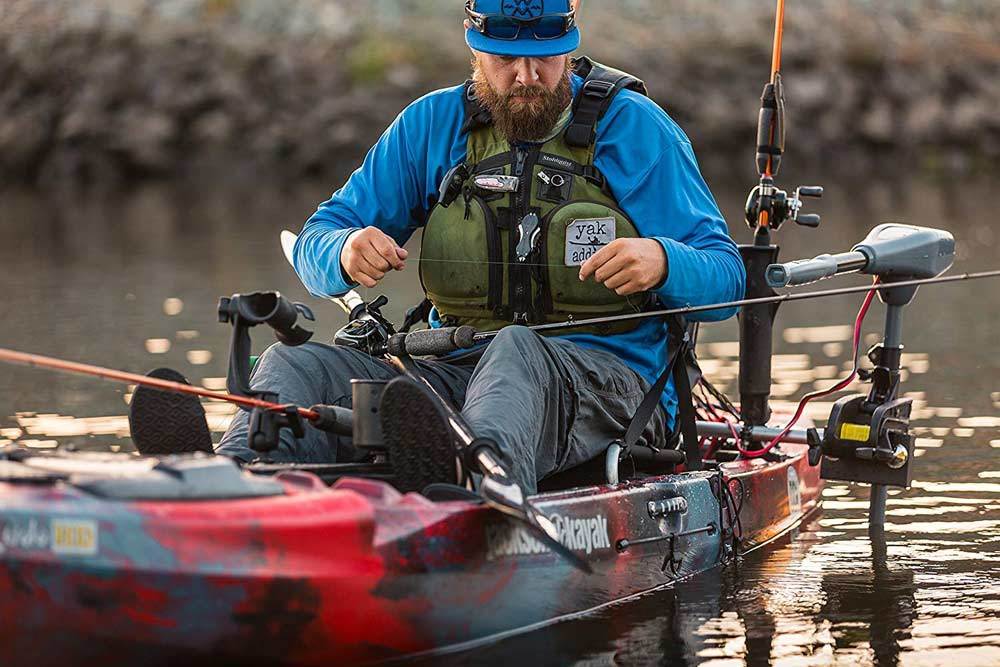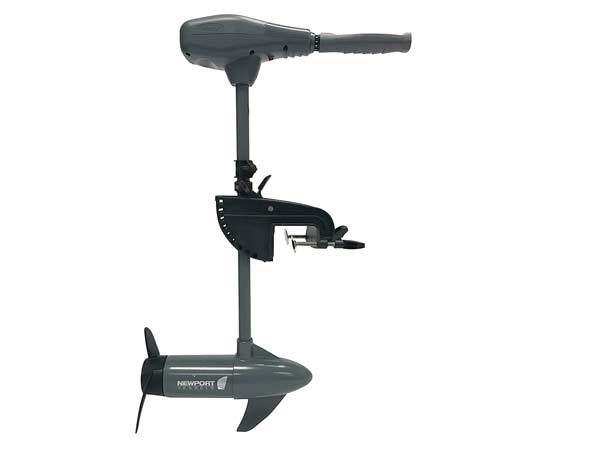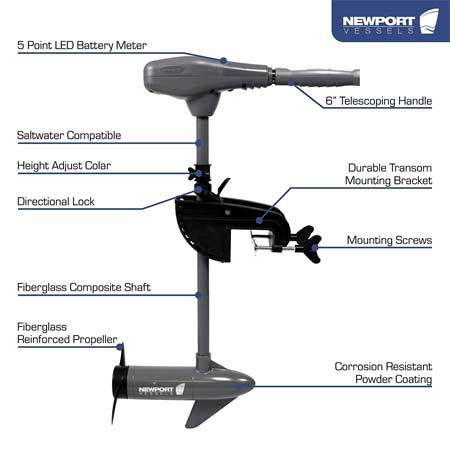If you know anything about fishing boats, fishing accessories, and things that can enhance your fishing experience, an electric trolling motor might just be the next best option for you.
What is a trolling motor?
A trolling motor is a self-contained unit, which means that it can be attached and detached for your own benefit and convenience. It attaches to an angler’s boat either at the bow or the stern. The unit itself has an electric motor, a propellor, and then controls to make it work for you.
When you fish all of the time, you know there are benefits to having a simple fishing set up. But when your boat doesn’t have a motor, your fishing time is infringed by your ability and stamina to row your boat everywhere. The more work you have to do actually getting to your fishing location, the less time you actually have to fish, so a motor might be a great investment in helping you get more out of your time out on the water.
Why should I consider getting a trolling motor?
Contrary to popular belief, all motors aren’t clunky and loud and ridiculously hard to install. In fact, it can be just the opposite! You can find all sorts of options that are customized specifically for your fishing needs and can work on all kinds and sizes of boats. They can be versatile, very portable, come in a range of sizes, and provide you with a host of advantages you haven’t even considered.
What do I need to keep in mind?
So, what should you keep in mind when shopping for a trolling motor? As we’ve said, your priorities will change based on the kind of fishing you do, the style of boat you have, et cetera. Whether you’re a seasoned pro looking to add another motor option to your arsenal, or you are a first-time buyer, keep these questions in mind as you decide what motor might be perfect for you.
Where are you mounting your motor?
Do you want it on the bow, or on the stern? In case you aren’t familiar with fishing terminology, the bow is at the front of the boat, and the stern is the base of the boat. When you get a motor that is mounted to the bow, you benefit from better maneuverability and control than the alternative. When you mount your trolling motor to the stern, you have better positioning and can be used with a hand/tiller control. There are several different methods when it comes to attaching these, so make sure to know your boat well enough to know what will work for you and what won’t.
Our Rating
What size do you need?
There are several factors to consider when you look at the size of a motor. These factors are the thrust, voltage, and shaft length.
Thrust refers to the power of the motor. Usually, you decide how much power you need by understanding how much your boat weighs. And not just how much your boat weighs empty, but how much your boat weighs with both gear and people combined. Generally speaking, a good ballpark figure to keep in mind considers two pounds of thrust for every one hundred pounds of boat weight. Next, consider the conditions in which you normally fish. If you usually fish in very calm waters, then extra thrust won’t be necessary. But if you are used to heavy or fluctuating winds, or you know you’ll always battle a strong current, then a little extra thrust might be a good idea.
Next up, you’ll want to keep the voltage in mind. Voltage refers to battery power, and you want to make sure you have plenty. Volts indicate how much battery power your trolling motor needs, and the standard conversion is 1 battery for every twelve volts.
Finally, the size of your motor can be impacted by the kind of shaft length you need for your motor to work properly. If the shaft is too short, then the prop won’t be submerged correctly and you will run into problems. This is where understanding the anatomy of your boat is particularly helpful, so you can make sure to get a shaft that is long enough to make the motor effective for your needs. Again, as a rule of thumb, you want the center of the motor to be submerged by at least 12 inches, if not more.
Are there different motors that I should consider?
If that’s not enough detail for you, believe it or not, there are all different kinds of trolling motor styles to consider, too. These options may change in their effectiveness based on where you are fishing and what kind of fishing you are doing, but it is helpful to notice what your options are in comparison to others.
Electric-steer motors have a higher technology push that helps you control and position your boat specifically. When you have a motor that connects with a GPS or navigation system, it can help you autopilot more so that you can spend more time fishing and less time finagling your boat.
Cable-steer motors are managed via a foot pedal, and they are better suited for more rugged waters and environments. If you are fishing somewhere with unexpected shallow spots, it will be most protected from weeds and hidden debris. These models use a cable attached to the foot pedal, which helps fishermen control the motor more specifically.
Hand control motors are basic and simple to use, and feature a tiller handle so you can respond quickly and easily to changes in the environment. This is the best option if you are looking for the most specific maneuvering, or need help controlling every little movement that your boat makes.
Our Rating
Final Thoughts
There are all sorts of great trolling motors out there, each with their own strengths and weaknesses. Whether you are just browsing or looking to make a purchase, take time to consider what is important to you in your fishing experiences. Don’t just buy the coolest looking or cheapest model -- instead, find something that is perfect for your fishing needs.



